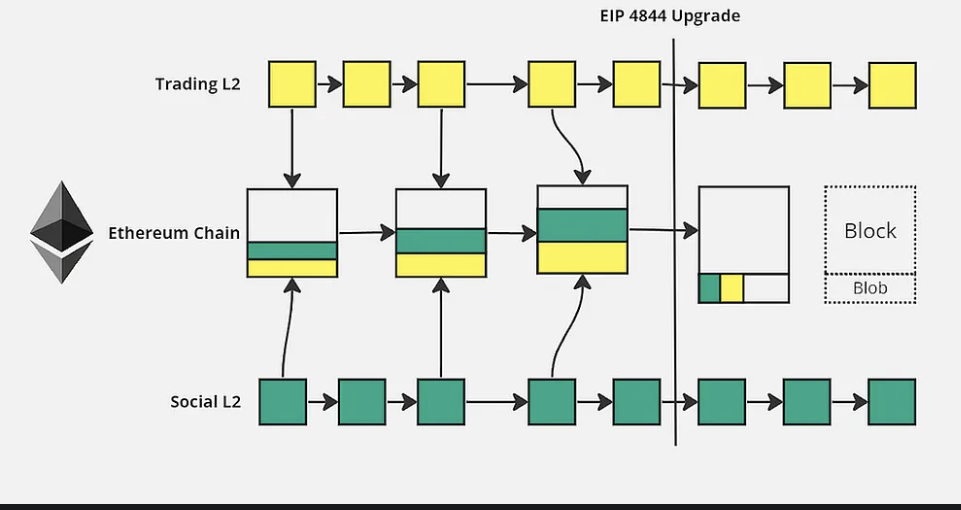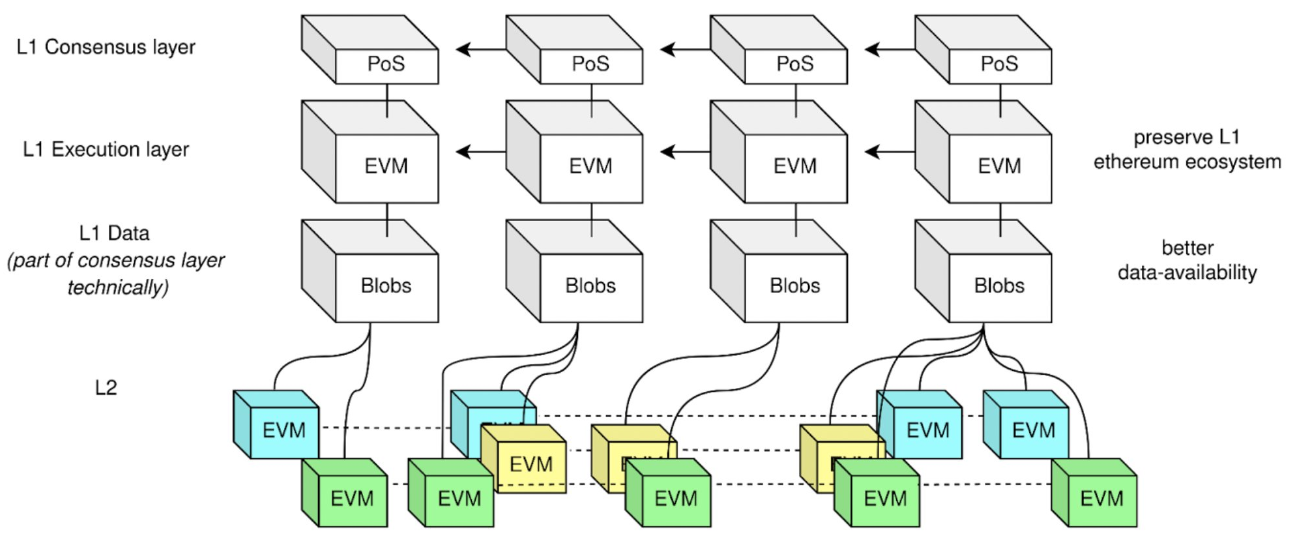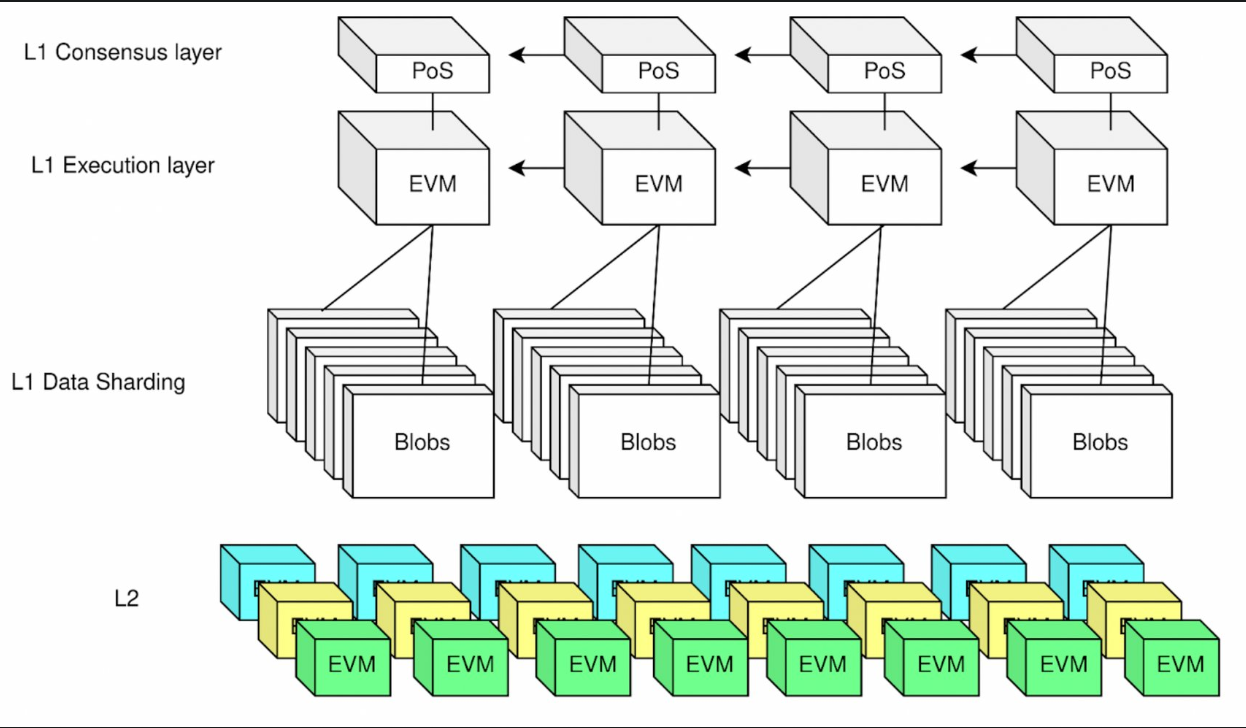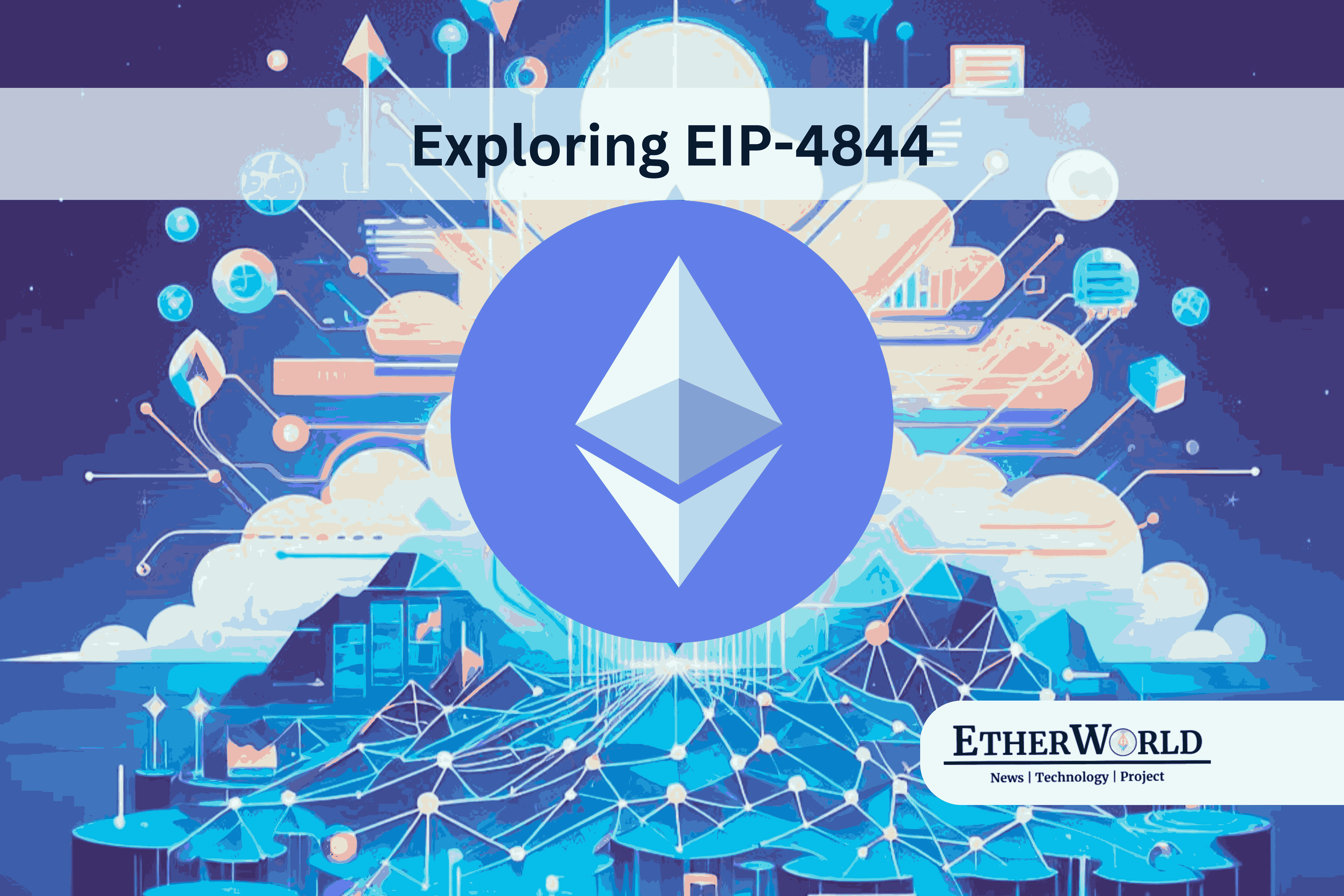Ethereum is the world's most popular blockchain platform. The rapid evolution of Ethereum necessitates continuous innovation to overcome scalability challenges. Ethereum can only process around 15 transactions per second, which is far too slow to meet the needs of a growing user base.
What are blobs?
EIP-4844 is a proposed upgrade to Ethereum that aims to solve the scalability problem. EIP-4844 introduces a new type of transaction called a blob. Blobs are large pieces of data that can be attached to Ethereum blocks.
Rollups, which are Layer 2 scaling solutions for Ethereum, will be able to use blobs to store their transaction data. This will free up space on the Ethereum main chain and allow rollups to process more transactions at a lower cost.
Present Scaling Status
Ethereum's trilemma of speed, security, and decentralization hinders its scalability. Sharding, the proposed solution, involves breaking Ethereum into parallel chains. However, this approach faced significant challenges, leading to the emergence of off-chain solutions like Polygon, Optimism, and ZKSync.
These shards stay aligned by leveraging the Beacon Chain for coordination.
Link to the Sharding Solution which was proposed by Vitalik himself
How does EIP-4844 help Layer 2 projects?
As mentioned above, Ethereum's scalability problem is one of the biggest challenges to its mainstream adoption. The high transaction fees and slow speeds make it difficult and expensive to use Ethereum for many applications.
This problem is particularly acute for rollups. Rollups are Layer 2 scaling solutions that bundle transactions together and process them off-chain. This allows rollups to process more transactions at a lower cost than the Ethereum main chain.
However, rollups still need to submit their transaction data to the Ethereum main chain for verification. This is necessary to ensure that rollups are secure and that their transactions are valid.
The problem is that submitting transaction data to the Ethereum main chain can be expensive. This is because the Ethereum main chain is congested (especially during airdrop and NFT minting) and transaction fees are high.
](https://etherworld.co/content/images/2023/11/upload_4d7efff002d8f048b34056e4d1d9c902.png)
The Solution:
EIP-4844 solves the scalability problem for rollups by introducing blobs. Blobs are large pieces of data that can be attached to Ethereum blocks.
Rollups will be able to use blobs to store their transaction data. This will free up space on the Ethereum main chain and allow rollups to process more transactions at a lower cost.
In addition, EIP-4844 introduces a new fee market for blobs. This fee market will allow rollups to compete for space in blobs. This competition will help to keep the cost of blobs low.

Deep Dive into EIP-4844 and Blob Revolution
EIP-4844 Unveiled:
EIP-4844, also known as Proto-Danksharding, is a pivotal proposal designed to propel Ethereum into a new era of scalability and efficiency. This section unveils the intricacies of EIP-4844, outlining its crucial role in addressing Ethereum's scaling challenges and exploring its key features and transformative changes.

Key Features and Transformative Changes
EIP-4844 introduces a number of key features and transformative changes, including:
-
Blobs: Blobs are the core innovation of EIP-4844. They allow rollups to store their transaction data off-chain, improving scalability and reducing transaction fees.
-
Data availability: EIP-4844 also introduces a new data availability market. This market incentivizes nodes to store and serve blob data, ensuring that it is always available to rollups and other applications.
-
Proto-Danksharding: EIP-4844 implements the core logic and scaffolding of Danksharding, a future scaling solution that will shard the Ethereum network into multiple parallel chains. This will further improve Ethereum's scalability and efficiency. Proto-Danksharding Devnet V1 user guide.

Working of Blob:
-
Rollups bundle transactions together and process them off-chain. This allows rollups to process more transactions at a lower cost than the Ethereum main chain. However, rollups still need to submit their transaction data to the Ethereum main chain for verification.
-
This is where blobs come in. Rollups can use blobs to store their transaction data. This frees up space on the Ethereum main chain and allows rollups to process more transactions at a lower cost.
-
Blobs are also designed to be scalable and efficient. Blobs can be stored on a variety of different storage devices, including distributed file systems and cloud storage providers. This makes it possible to scale the storage capacity of blobs as needed.
-
Blobs are designed to be efficiently verifiable. Blobs are divided into small pieces called chunks. Each chunk is then hashed and the hashes are stored in a Merkle tree. This allows validators to verify that a blob is complete without having to download the entire blob.
Here are some of the key aspects of blobs:
-
Size: Blobs can be very large, up to 128 KB in size. This makes them ideal for storing large amounts of transaction data.
-
Cost: Blobs are much cheaper to store on Ethereum than regular transaction data. This is because blobs are stored in a separate area of the Ethereum blockchain that is dedicated to blobs.
-
Verifiability: Blobs are very efficiently verifiable. This is because blobs are divided into small pieces and the hashes of those pieces are stored in a Merkle tree.
-
Availability: Blobs are highly available. This is because blobs can be stored on a variety of different storage devices, including distributed file systems and cloud storage providers.
Blobs Use Cases:
-
Rollups: Rollups can use blobs to store their transaction data. This would free up space on the Ethereum main chain and allow rollups to process more transactions at a lower cost.
-
Data markets: Blobs could be used to create a new type of data market on Ethereum. This data market could allow users to buy and sell data in a secure and efficient way.
-
Decentralized applications: Blobs could be used to create new types of decentralized applications (DApps). For example, blobs could be used to create DApps that allow users to store and share data in a decentralized way.
Benefits:
-
Scalability: Blobs can be used to store large amounts of data without impacting the performance of the application or database.
-
Efficiency: Blobs are efficiently stored and retrieved.
-
Flexibility: Blobs can be used to store any type of binary data.
-
Security: Blobs can be encrypted to protect the stored data.
Challenges:
-
Complexity: Blobs can be complex to implement and manage.
-
Performance: Blobs can impact the performance of the application or database if they are not accessed efficiently.
-
Cost: Blobs can be expensive to store, especially if they are stored on a cloud storage provider.
EIP-4844 is still under development, but it has the potential to revolutionize the Ethereum ecosystem. Blobs are one of the key features of EIP-4844, and they have the potential to make Ethereum more scalable, efficient, and useful for a wider range of applications.
Scalability:
EIP-4844 will allow rollups to process more transactions at a lower cost. This is because rollups will have a dedicated area on the Ethereum blockchain to store their data. This will free up space on the main Ethereum chain and allow rollups to process more transactions without having to compete for block space.
Communication:
EIP-4844 will allow rollups to communicate with each other more easily. This is because rollups will be able to query data from blobs to make optimistic assumptions about the state of other rollups. This will improve the security and efficiency of rollups.
Diversity:
EIP-4844 will make it easier for application-specific rollups to be developed. This is because EIP-4844 will reduce the network administration costs associated with developing and maintaining rollups. This will lead to a more diverse range of rollups that are tailored to specific applications.
EIP-4844 is expected to have a transformative impact on the Ethereum ecosystem. By addressing Ethereum's scaling challenges, EIP-4844 will make the way for wider adoption and innovation.
Overall, EIP-4844 is a major upgrade to the Ethereum ecosystem that has the potential to make Ethereum more scalable, efficient, and useful for a wider range of applications.
We are looking forward to see how the Ethereum community adopts and uses EIP-4844 in the years to come.
Read More
-
scroll-successfully-launches-mainnet-for-zkevm-boosting-ethereum-scalability
-
Solutions to Scalability: Can Off-Chain Payments Scale Blockchain?
Disclaimer: The information contained in this website is for general informational purposes only. The content provided on this website, including articles, blog posts, opinions, and analysis related to blockchain technology and cryptocurrencies, is not intended as financial or investment advice. The website and its content should not be relied upon for making financial decisions. Read full disclaimer and privacy Policy.
For Press Releases, project updates and guest posts publishing with us, email to contact@etherworld.co.
Subscribe to EtherWorld YouTube channel for ELI5 content.
Share if you like the content. Donate at avarch.eth or Gitcoin
You've something to share with the blockchain community, join us on Discord!







